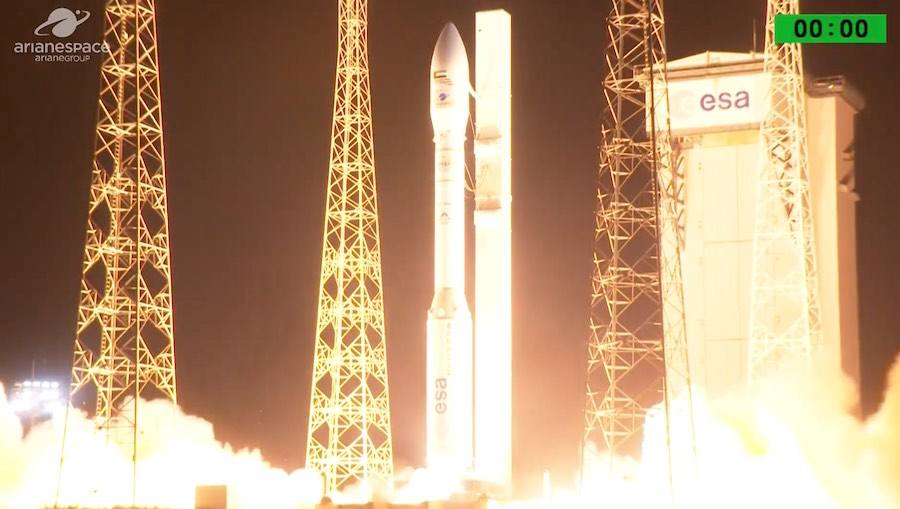During the night of 10 to 11 July, Arianespace’s small-lift launcher suffered an anomaly after two minutes of flight, resulting in the failing of the mission.
After having postponed for five days the date of the launch because of violent winds over the Guyana Space Center, the mission VV15 was able to start on July 11 at 01:53 UTC. It should have lasted 57 minutes and 9 seconds and enabled to place the optic reconnaissance satellite Falcon Eye 1 (1.2 t) — built by Airbus Defence and Space (prime contractor) and Thales Alenia Space, on behalf of the United Arab Emirates’ army — on a sun-synchronous orbit located at 611 km of altitude.
But after a little more than two minutes of flight, during the ignition of the solid propergol Zefiro 23 of the second stage, a “major anomaly” caused the degradation of the Vega launcher trajectory, thus the loss of the launcher and its payload.
“A difficult job”.
The failure of the VV15 mission was confirmed by Executive Vice President for Missions, Operations & Purchasing at Arianespace Luce Fabreguettes, nine minutes after the liftoff. She expressed her “deepest apologies” to the client.
CNES President Jean-Yves Le Gall said in a press release: “This failure reminds us once more that we are in a tough business and that the line between success and failure is a very fine one indeed.”
It was the 15th flight of the European small-lift launcher, which had entered into service in February 2012, recording 100% success rate until now. Its next mission was scheduled for September 9.

